The latest death toll stands at 4,741 Palestinians and at least 1,405 people killed in Israel since October 7.
Israel has pounded the Gaza Strip for a 16th day in a row as the besieged Palestinian enclave faces a growing humanitarian catastrophe.
Here are the latest casualty figures as of October 22, 2.00pm local time (11:00 GMT):
Gaza
- Killed: At least 4,651
- Including at least:
- 1,756 children
- 967 women
- Including at least:
- Injured: More than 14,245
Occupied West Bank
- Killed: At least 90
- Injured: At least 1,400
Israel
- Killed: At least 1,405
- Injured: At least 5,132
The figures have been reported by the Palestinian health ministry, Palestine Red Crescent Society and Israeli Medical Services.

Residents in Gaza have flocked to hospitals and United Nations schools for safety, hoping that Israel will abide by international law and not attack those coordinates.
However, places of shelter have also not been free from Israeli attacks.
Here is a list of infrastructure and other facilities that have been damaged or shut down in Gaza as of October 16.

Deadly attack on a Gaza hospital
On Tuesday night, an Israeli air raid on Gaza hospital killed at least 471 people, according to Palestinian officials in the besieged enclave.

Located in central Gaza, the al-Ahli Arab Hospital, which is run by the Episcopal Diocese of Jerusalem, was struck while it was overwhelmed with thousands of Palestinians seeking shelter amid a campaign of brutal Israeli air attacks across much of the besieged Gaza Strip.
The health ministry in Gaza said the blast at the hospital was caused by an Israeli air raid. Israel has attributed the explosion to a misfired rocket launched by the Palestinian Islamic Jihad (PIJ) armed group. The PIJ has denied the allegation.
Israel drops 6,000 bombs on Gaza in six days
Israel says it has dropped 6,000 bombs on the Gaza Strip since Hamas’s attack on October 7, nearly matching the number of bombs the US used in Afghanistan in one year.
Afghanistan is almost 1,800 bigger than the besieged enclave.

Sixteen years of Israeli blockade
Gaza has a population of about 2.3 million people living in one of the most densely populated areas in the world. Located between Israel and Egypt on the Mediterranean coast, the strip is about 365sq km (141sq miles).
Since 2007, Israel has maintained strict control over Gaza’s airspace and territorial waters and restricted the movement of goods and people in and out of Gaza.
Following Hamas’s attack, Israeli Prime Minister Benjamin Netanyahu has threatened to turn Gaza into a “deserted island” and warned its residents to “leave now”.
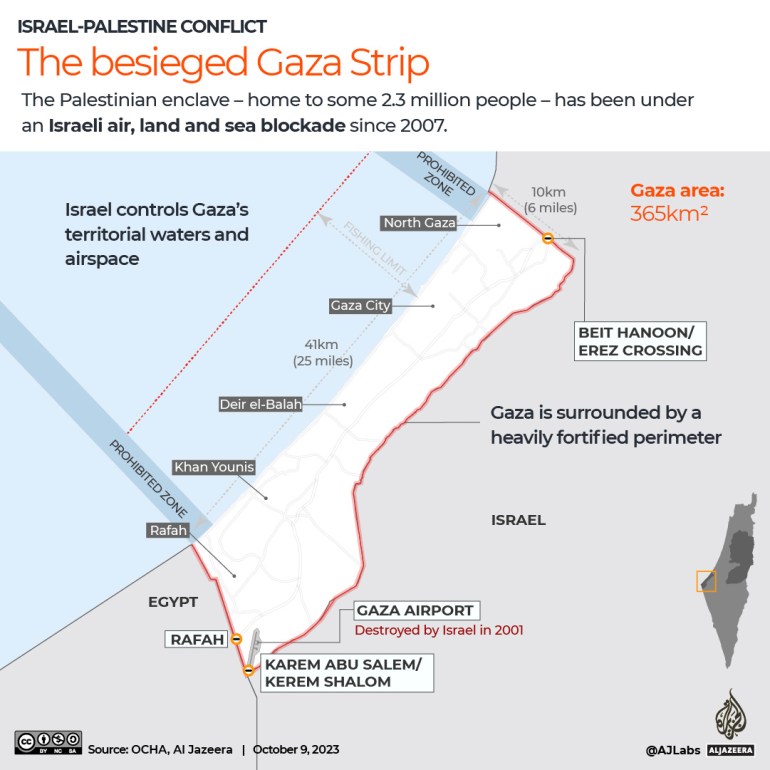
How the Hamas attack unfolded
On Saturday morning, at about 6:30am (03:30 GMT), Hamas fired a huge barrage of rockets into southern Israel with sirens heard as far away as Tel Aviv and Beersheba.
The group said it launched 5,000 rockets in the initial barrage. Israel’s military said 2,500 rockets were fired.
About an hour later, fighters crossed into Israel in an unprecedented multipronged operation through land, air and sea. Most fighters entered through breaches in security barriers separating Gaza and Israel.
Hamas’s surprise attack came after Israeli settlers stormed the Al-Aqsa Mosque compound in recent days and a record number of Palestinians were killed by Israel in recent months.
At 9:45am (06:45 GMT), blasts were heard in Gaza and at 10am (07:00 GMT), Israel’s military spokesperson said the air force was carrying out attacks in Gaza.
Gun battles continued between Israeli forces and Palestinian fighters in several areas of southern Israel.
Israeli air attacks continued late into the night as did rocket fire into southern Israel.
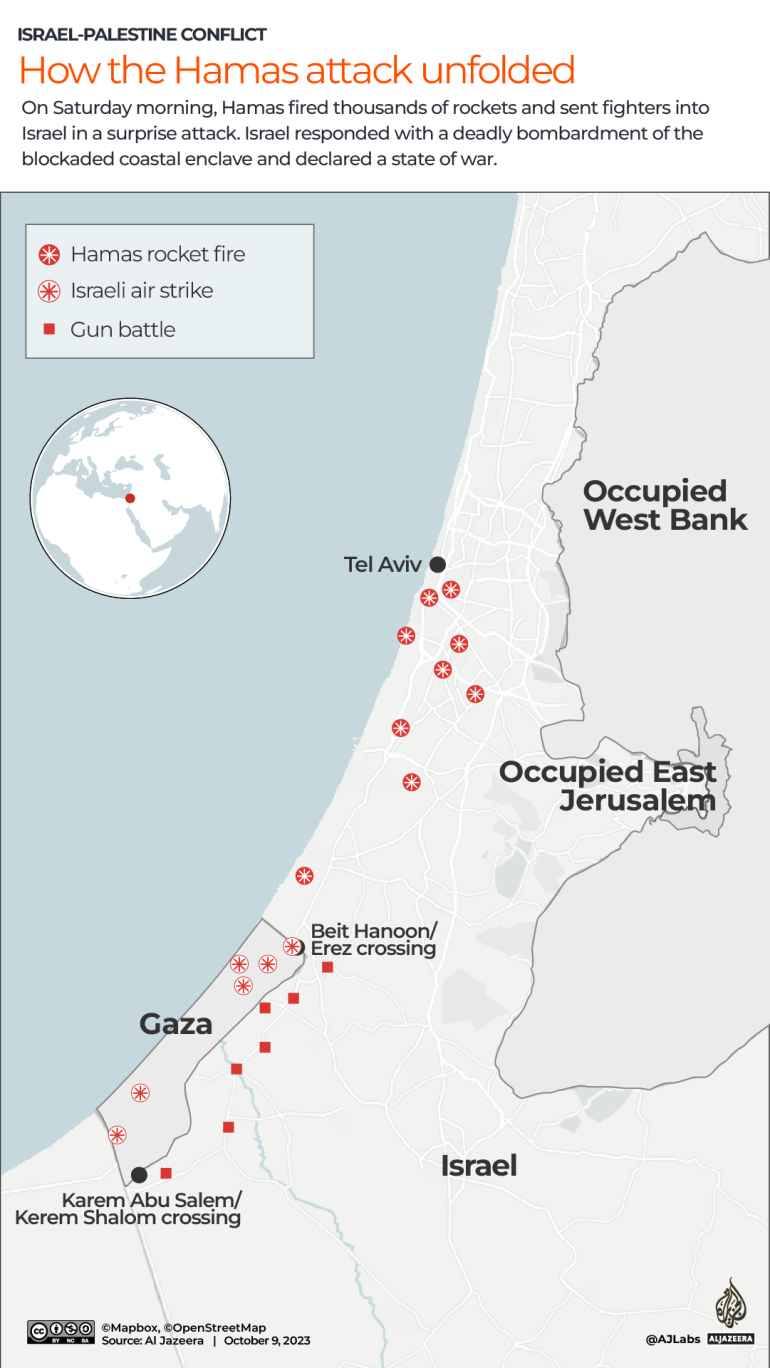
Gaza’s densely populated neighbourhoods
The Gaza Strip comprises five governorates: North Gaza, Gaza City, Deir el-Balah, Khan Younis and Rafah.
North Gaza extends for 10km (6 miles) and shares the only crossing into Israel through Beit Hanoon, also known as the Erez crossing.
North Gaza is home to the Jabalia refugee camp, the largest in the strip.
Gaza City is the largest and most populous city within the Gaza Strip, with more than 750,000 residents. Rimal, Shujaiya and Tel al-Hawa are among its most well-known neighbourhoods.
At the heart of the Rimal neighbourhood is al-Shifa Hospital – the largest medical facility in the Gaza Strip.
Deir el-Balah is one of Gaza’s largest agricultural producers. It is also home to four refugee camps: Nuseirat, al-Bureij, al-Maghazi and Deir el-Balah.
Gaza’s only operating power plant is located along the district’s boundary with Gaza City.
Khan Younis is home to some 430,000 people. At its centre is the Khan Younis refugee camp, where about 90,000 people live.
Rafah is the southernmost district of Gaza with a population of about 275,000. Rafah is also the name of the crossing with Egypt that is located here.
Both Israel and Egypt have kept their borders largely shut, and are responsible for further deteriorating the already weakened economic and humanitarian situation.
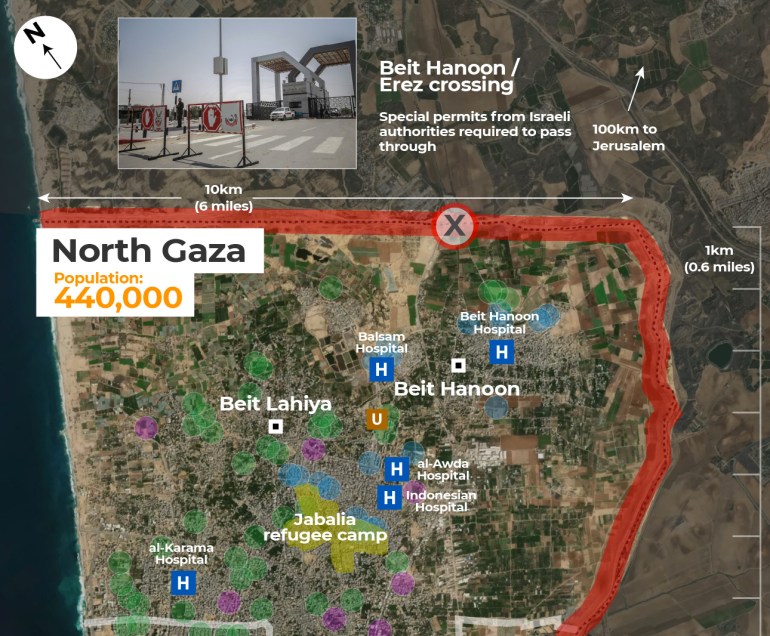
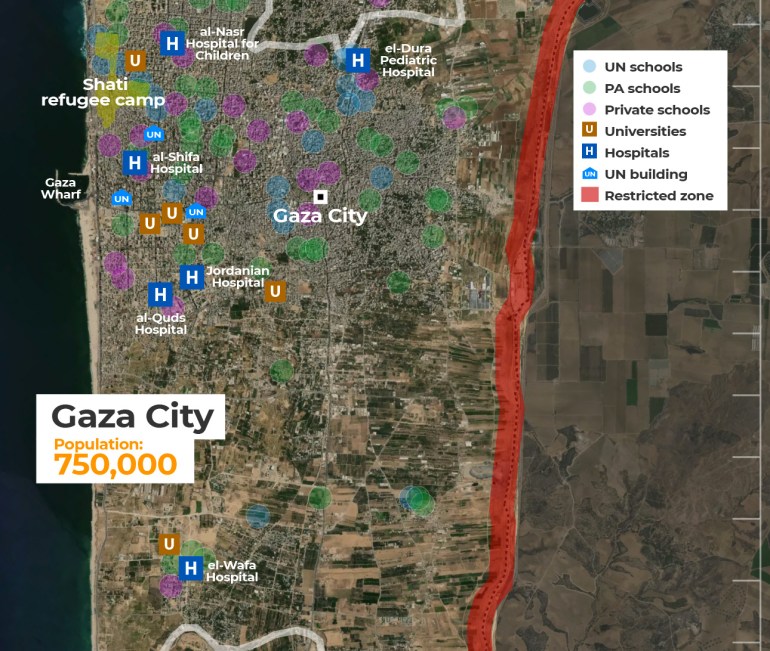
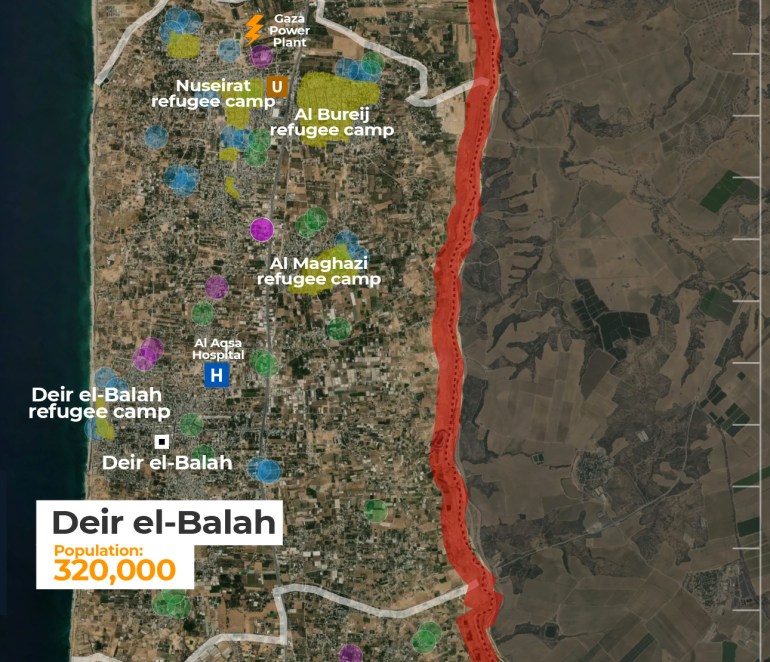
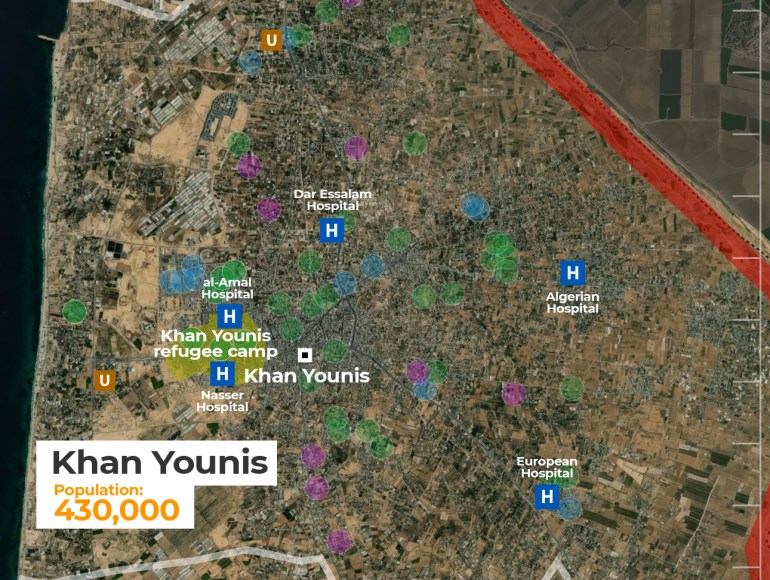
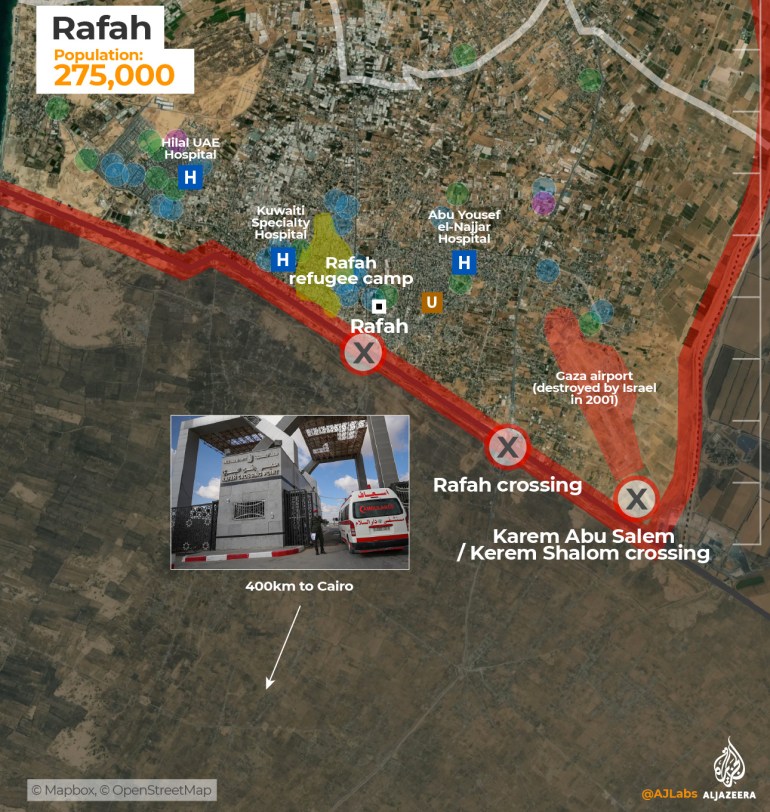
SOURCE: AL JAZEERA
